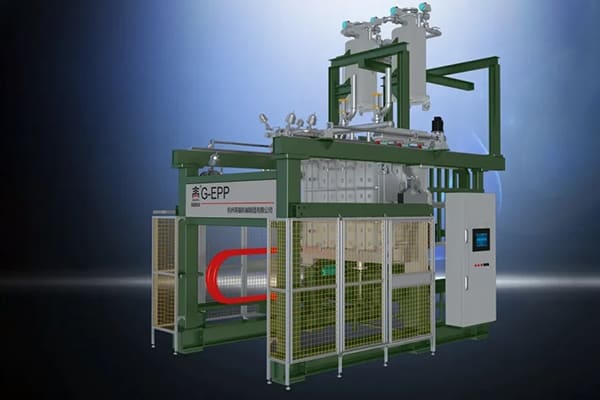As the demand for expanded polystyrene (EPS) products grows in industries such as packaging, insulation, and construction, EPS moulding machine packaging factories face increasing pressure to optimize their operations. Reducing production costs without compromising on quality is essential for remaining competitive in a fast-paced market. Fortunately, there are several strategies that factories can employ to lower costs and increase efficiency. In this article, we will explore practical ways to save costs in an EPS moulding machine packaging factory, from energy management to improved automation.
1. Optimize Energy Usage
One of the largest expenses in an EPS moulding machine factory is energy consumption. The process of moulding EPS foam requires a significant amount of steam and electricity, making energy efficiency a key factor in reducing operational costs. By optimizing energy usage, factories can cut costs while maintaining the same level of productivity.
- Upgrade to Energy-Efficient Machines: Modern EPS moulding machines are designed to be more energy efficient than older models. They often include features like steam recovery systems that reuse excess heat, reducing the amount of energy required for each cycle. Investing in new, energy-efficient equipment may have an upfront cost, but it will pay off in the long run through lower energy bills.
- Monitor and Control Energy Use: Implementing a monitoring system to track energy consumption can help identify areas where energy is being wasted. By using smart control systems, factories can automate the management of steam and electricity, ensuring that only the required amount of energy is used for each production batch.
- Insulate Steam Pipes: A large portion of energy is lost in the form of heat during the steam transfer process. By properly insulating steam pipes and equipment, factories can reduce heat loss, lower steam consumption, and save on energy costs.
2. Streamline Production Processes
Inefficiencies in the production process can lead to increased labor and material costs. Streamlining operations through improved workflows and technology can lead to significant savings in an EPS moulding machine factory.
- Implement Lean Manufacturing Principles: Lean manufacturing focuses on minimizing waste and maximizing efficiency. By adopting lean principles, such as reducing unnecessary steps, standardizing work processes, and eliminating bottlenecks, factories can reduce labor costs and increase production speed.
- Use Automated Systems: Automation is a critical component in modern manufacturing, and it plays a particularly important role in EPS moulding. By using automated control systems to manage the moulding process, factories can reduce the need for manual labor, lower error rates, and improve overall production efficiency. Advanced machines with automatic control features can monitor and adjust the moulding process in real-time, ensuring consistent quality while reducing human intervention.
- Optimize Material Usage: Material costs, particularly polystyrene beads, account for a large portion of production expenses. By optimizing the use of raw materials, factories can minimize waste and reduce overall costs. This can be achieved by adjusting the machine settings to ensure that only the necessary amount of material is used for each mould.
3. Maintenance and Preventive Care
Poorly maintained machines can lead to unexpected downtime, decreased efficiency, and higher repair costs. Establishing a regular maintenance schedule for EPS moulding machines is essential for reducing long-term costs and ensuring smooth operations.
- Regular Maintenance Checks: Performing routine maintenance checks on machines can help detect potential issues before they become costly problems. By identifying worn-out components or calibration errors early, factories can avoid production delays and expensive repairs.
- Use High-Quality Parts: Using high-quality spare parts and components for EPS moulding machines can increase their longevity and performance. While cheaper alternatives may seem cost-effective in the short term, they often lead to more frequent breakdowns and higher long-term maintenance costs.
- Preventive Maintenance Programs: Implementing a preventive maintenance program ensures that machines are kept in optimal condition. Scheduling regular service and replacing worn parts before they fail helps avoid unplanned downtime, which can lead to costly disruptions in production.
4. Reduce Labor Costs Through Training and Efficiency
Labor is another significant cost factor in EPS packaging factories. However, by investing in employee training and optimizing workflows, factories can increase productivity while reducing overall labor costs.
- Training for Efficiency: Well-trained employees are more efficient and make fewer mistakes, reducing waste and improving overall production speed. Providing workers with comprehensive training on how to operate and maintain EPS moulding machines can increase efficiency and reduce costly errors.
- Cross-Train Employees: Cross-training employees to operate multiple machines or perform different roles within the factory can increase flexibility and reduce the need for additional labor. This ensures that workers can adapt to changes in production demands without requiring additional hiring.
- Adopt Shift Optimization: Reviewing and optimizing shift patterns can help factories reduce labor costs. By aligning shifts with production demands and minimizing overtime, factories can reduce wage expenses while maintaining productivity.
5. Invest in Sustainable Practices
Sustainability and cost-saving often go hand-in-hand. By implementing eco-friendly practices, EPS factories can not only reduce their environmental impact but also cut operational costs.
- Recycle EPS Waste: Instead of discarding EPS scrap, factories can invest in recycling systems to repurpose waste material into new products. This reduces material costs and minimizes the environmental impact of the factory.
- Water and Steam Recycling: Many EPS moulding factories are adopting water and steam recycling systems to reduce waste. By reusing water and steam, factories can lower utility costs and reduce their carbon footprint.
Conclusion
Reducing costs in an EPS moulding machine packaging factory requires a combination of energy optimization, streamlined production processes, preventive maintenance, labor efficiency, and sustainable practices. By investing in energy-efficient machines, automating processes, maintaining equipment, and training employees, factories can significantly lower production costs without compromising on quality. These strategies not only improve profitability but also ensure long-term competitiveness in the growing EPS packaging industry.
Post time: 09-14-2024






